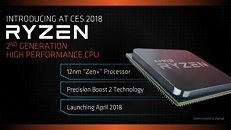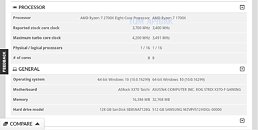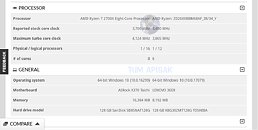
Lenovo Confirms AMD Ryzen 3 2300X and Ryzen 5 2500X Specs
Lenovo put up an updated specs sheet of its ThinkCentre M725 small form-factor desktop, with more processor options. Notable additions to these include the upcoming AMD Ryzen 3 2300X and Ryzen 5 2500X quad-core socket AM4 processors. The two chips succeed the 1300X and 1500X, respectively, and are designed to capture sub-$150 price-points, competing with Intel's Core i3 "Coffee Lake" quad-core processor series. It's rumored that the 2300X could even be priced close to the $100-mark, making it competitive with the i3-8100, while the 2500X could be priced competitively with the i3-8300.
AMD is giving these quad-core chips all its innovations it can muster to make them competitive with Intel's chips - the two feature unlocked base-clock multipliers, Precision Boost (Intel's Core i3 chips lack Turbo Boost), and XFR 2.0, which automatically overclock beyond the max boost frequencies. You also get the latest Precision Boost 2.0 algorithm that ensures each of the four cores gets varying degrees of boost clocks. Based on the 12 nm "Pinnacle Ridge" die, the two chips feature a 2+2 CCX configuration. The 2300X has 4 MB of L3 cache enabled per CCX (8 MB total), while the 2500X gives you the full 8 MB per CCX L3 cache, for a total of 16 MB. TDP of both chips are rated at 65W, and AMD could bundle the Wraith Stealth cooler with the two.
AMD is giving these quad-core chips all its innovations it can muster to make them competitive with Intel's chips - the two feature unlocked base-clock multipliers, Precision Boost (Intel's Core i3 chips lack Turbo Boost), and XFR 2.0, which automatically overclock beyond the max boost frequencies. You also get the latest Precision Boost 2.0 algorithm that ensures each of the four cores gets varying degrees of boost clocks. Based on the 12 nm "Pinnacle Ridge" die, the two chips feature a 2+2 CCX configuration. The 2300X has 4 MB of L3 cache enabled per CCX (8 MB total), while the 2500X gives you the full 8 MB per CCX L3 cache, for a total of 16 MB. TDP of both chips are rated at 65W, and AMD could bundle the Wraith Stealth cooler with the two.




